The splendid feudal capital of the Pignatelli
Vibo stands on the slope of a hill facing the gulf of Sant'Eufemia. In a strategic position, the city and its port are a nexus between the plain of Sant'Eufemia, the plain of Gioia Tauro and the Serre Calabresi. It was also crossed by the consular road, known as Popilia-Annia, which ran from the Appia to Capua and continued to Reggio Calabria, and which remained an important artery during the Middle Ages.
The first settlement in the area was the Locrian colony of Hipponion, later replaced by the Roman Valentia. It was also known as Vibo/Vibona, which is probably an Oscan derivation. Between the 9th and 10th centuries, following the Saracen incursions, some of the population abandoned the narrow coastal strip and sought refuge on the hill behind.
The "rebirth" of the city is usually traced to the intercession of Frederick II of Swabia, who renamed it Monteleone.
In the fifteenth century the city was not particularly prosperous despite its favorable position, but during the sixteenth century, following the rise of the feudal lordship of the Neapolitan Pignatelli family, there was a progressive increase in the population and rapid economic development.
A key figure is certainly Ettore Pignatelli, who gained dominion over the city at the beginning of the sixteenth century initially with the title of count and later as duke. Prior to that it had been part of the royal estate.
He was the powerful viceroy of Sicily under Charles V of Habsburg, but had an exceptional artistic sensitivity and a solid humanistic education, he made Monteleone his "feudal capital", renovating or erecting buildings, such as the convent complex of Santa Maria di Gesù or San Dominico, in synergy with the religious orders.
He also hired artists of the caliber of Antonello Gagini, owned a rich library and brought together several intellectuals in his court, such as Antonio Sebastiano, known as Minturno.
In this stimulating cultural climate, Monteleone also experienced an early phenomenon of private collecting in the extraordinary figure of Galeazzo Capiabi, who in 1514 had set up a substantial number of antiquities (sculptures and epigraphs) outside his palace, probably from ancient Valentia.
What to see here
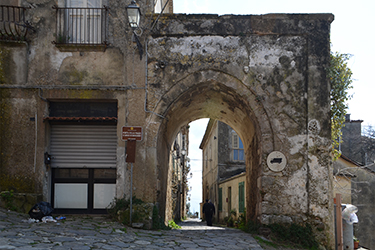
Arco di Marzano
The so-called Arco di Marzano incorporates the Porta di Piazza, which is one of the city gates that gave access to the medieval district of Borgonovo, in the upper part of the city.
Read allBivona Castle
The castle stands on a very stratified site, which once hosted the ancient port of the Greek colony of Hipponion.
Read all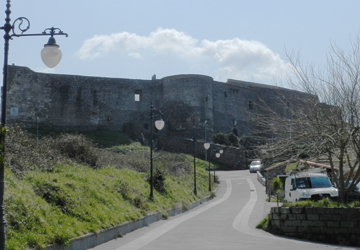
Castle
The Castle, which stands at the highest point of the city, houses one of the offices of the Superintendence of Archeology, Fine Arts and Landscape of Calabria and the Vito Capialbi National Archaeological Museum.
Read all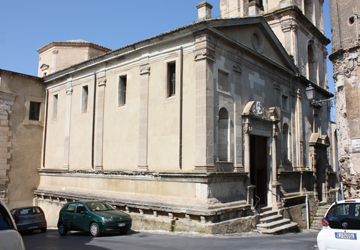
Chiesa di San Michele
The church, the main parish church of Vibo before the current Cathedral was built, is located at the highest point of the road which, in medieval times, represented the junction between the district of Borgonovo and that of Terravecchia
Read all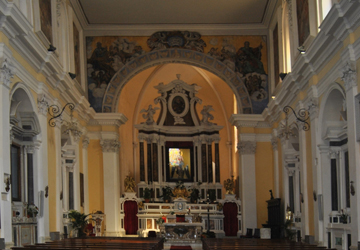
Church of Santa Maria la Nova
The church now dedicated to Santa Maria la Nova was founded in 1521 on the initiative of the Duke of Monteleone, Ettore Pignatelli, under the title of Santa Maria del Gesù
Read all
Church of Santa Maria Maggiore and San Leoluca
The building stands on the site previously occupied by the church of Santa Maria della Neve, founded in the 9th century near the medieval village called Terravecchia.
Read all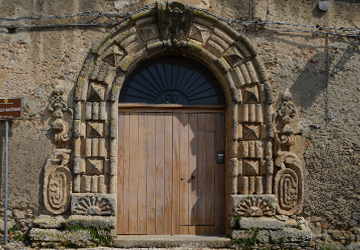
Palazzo Marzano
The origins of the residence date back to works carried out by Galeazzo Capialbi, a man at arms from Benevento, between 1496 and 1514, on an area granted to him by the city Parliament.
Read all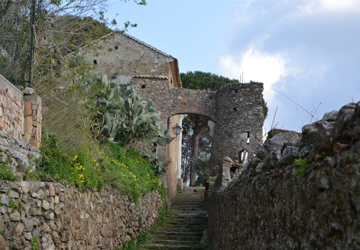
Porta d’Apice
The gate, one of the seven that gave access to the medieval settlement of Borgonovo, was located at the southern end of the medieval city walls.
Read all
Valentianum
The Valentianum, or Museum of Sacred Art of Vibo Valentia, is located on the first floor of the old Dominican convent established in the city in 1455.
Read all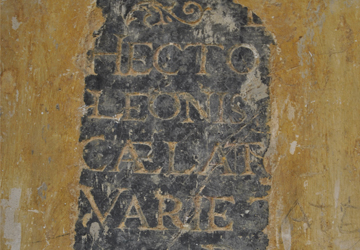
Fragment of the inscription from the Pignatelli altar
The fragment, currently walled into the former cloister of the church of Santa Maria degli Angeli, was part of a larger inscription positioned over the altar commissioned by Ettore III Pignatelli, Duke of Monteleone in 1598
Read all